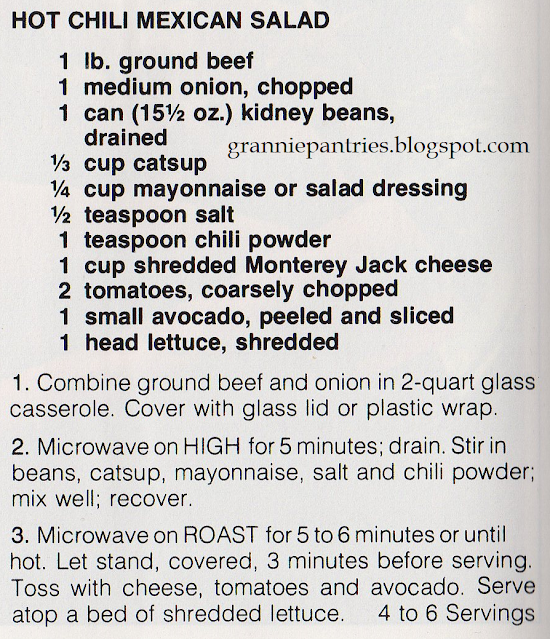I was excited to pick up Carlson Wade's Natural Foods Crockery Cookbook (1975) because I love a '70s health food cookbook. They are usually just as packed with questionable-at-best theories about what makes food "healthy" (and what "healthy" means anyway) and trendy-for-the-time foods as any wellness nonsense we see today.
I actually came away kind of disappointed with this one, though. It is WAAAAY more about the "crockery" (meaning slow cooker) part of the title than the "natural." Natural foods cookbooks usually have lengthy explanations of what is "natural" or "healthy" (and often attack anything that falls outside that realm), an in-depth exploration of the author's health food philosophy, etc. This book mostly tells how to use and take care of a slow cooker. Sure, there are mentions of how the cooking method will help retain vitamins in the foods' natural juices, but there's really not a lot of health food talk. Perusing the recipes doesn't exactly help, either. A lot of them are just pretty standard stews and roasts with standard meats and vegetables.
Occasionally, there's a hint that there might be some weird "health" philosophy behind the scenes, like this recipe for "Fruit" Cake.
Why does the book insist on calling a carrot cake a "fruit"-in-scare-quotes cake? You might think that the author has some hang-up about the sugars in fruit and recommends replacing fruits with vegetables, but 1. This recipe allows for optional raisins; and 2. This has 2-1/2 cups of sugar! Clearly, the author is not afraid of sugar. And if any question of trying to limit fruit remains (The raisins are optional, after all!), well, the recipe for Ham Steak in Port Wine should dispel that notion.
Clearly not as put off by fruity-and-meaty combinations as I am, Wade smothers the ham in cranberries, grapes or raisins, and pineapple, all kept juicy and sweet with cider, port wine, maple syrup, and orange juice. Again, this is clearly not someone put off by sugar!
The dessert section isn't packed with cottage cheese, nonfat dry milk powder, prune, and sunflower-seed-based concoctions, either.
This has the expected honey and carob, though in this case the carob powder is inexplicably paired with crème de cacao?! I can't even begin to guess the idea behind this. And while dippers can be apples or bananas, the recipe also suggests cake and marshmallows.
Since the commitment to "natural" foods was so low, I guess I shouldn't have been that surprised to find a few recipes that seemed minimally committed to the "crockery" part of the title, either. Sure, Gourmet Dressing does eventually come around to the slow cooker.
This only happens after a stint of sautéing a meat mixture and cooking rice on the stovetop-- a time-consuming enough process that it kind of negates all the points in the introduction about how slow cooking will streamline everything-- but then once everything is combined, the dressing is stuffed into a bird (conspicuously absent from the ingredient list). Sure, you can cook the bird in the slow cooker (as instructed), but if you want crisp skin, you're better off putting it in the oven. I expected the recipe to be for a dressing served on its own (as the name dressing rather than stuffing seems to imply)-- one that could spend time in the slow cooker while the oven was occupied with other foods. (You know, the kind of thing that would be helpful at a holiday meal.) In short, the slow cooker could have saved the day, rather than turned out a soggy fowl with rubbery skin.
In short, Carlson Wade's Natural Foods Crockery Cookbook doesn't seem fully committed to its premise, but as terrible as '70s health food tends to be, I can't entirely blame it. Plus, its occasional decision to use a slow cooker in a less-than-optimal way is not even half as egregious as the uses microwave cookbooks used to dream up for those expensive appliances.... I guess I'll give Carlson Wade a pass on this one.












































